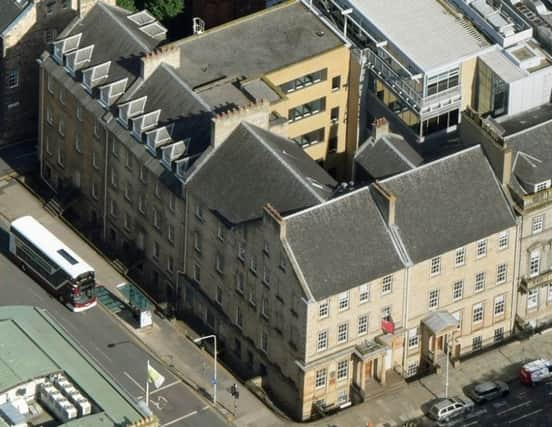Edinburgh hotel prices rising three times as fast as UK


The average daily rate (ADR) in the Scottish capital now tops £100, cementing its place as the second most expensive city in which to spend the night, behind London. It follows a 12.4 per cent surge in 2017, compared with average UK-wide ADR growth of 3.6 per cent.
Glasgow rates grew by 5.2 per cent, according to PwC’s latest survey of hotel performance. However, in Aberdeen, which is still reeling from a downturn in the oil industry, there was a fall in both the occupancy rate and revenue per available room.
Advertisement
Hide AdAdvertisement
Hide AdClaire Reid, PwC’s head of assurance in Scotland, said: “While the overall UK picture shows a hotel sector reflective of lacklustre economic growth, Scotland’s largest two cities are showing that the country remains in high demand for both tourists and business travellers.
“Edinburgh in particular enjoyed a huge surge in 2017, with revenue per available room increasing significantly ahead of the national average. With the focus set to be on accommodating more luxury operators in the city, that is likely to increase further.
“Glasgow’s growth as a tourist destination also shines through in the data, and the city is set for a busy summer as it hosts the 2018 European Athletics Championships.”
Edinburgh has seen a flurry of hotel development activity recently, both at the budget end of the market and from upmarket operators such as Sir Richard Branson’s Virgin Hotels and Malmaison, which have both unveiled plans for new city centre establishments.
The PwC report shows that, in the year to December, the average revenue per available room (RevPar) – a key industry measure – in Edinburgh increased to £86.41 from £76.88 a year earlier, while 2017 occupancy rates hit 83.7 per cent, up from 82.1 per cent in 2016. The ADR paid by guests soared to £103.29, up from £93.60 previously.
In Glasgow, the picture was also positive, with occupancy rates climbing to 82.1 per cent, up from 79.6 per cent, as the ADR paid by guests increased to £72.10, from £70.66.
In Aberdeen, the occupancy rate fell to 62.1 per cent from 62.5 per cent as the city continues to adapt to the slowdown in the oil and gas markets. RevPar in Aberdeen fell to £35.92 from £38.28 as the ADR dropped to £57.89 from £61.24.
Looking forward, Glasgow is expected to add more than 1,000 hotel rooms in 2018 and a further 1,000 in 2019, with particular demand in the area around the SSE Hydro, where a Radisson Red has recently opened, and close to the International Financial Services District.
While the branded budget hotel sector has driven much of the increased supply now comprises half of the total UK pipeline, the report suggests that Edinburgh could see fewer budget rooms opening.